AFRO-AMERICAN MUSIC INSTITUTE CELEBRATES 36 YEARS
http://www.indiegogo.com/projects/building-today-for-tomorrow/x/267428
Pain Relief Beyond Belief
http://www.komehsaessentials.com/
PITTSBURGH JAZZ
From Blakey to Brown, Como to Costa, Eckstine to Eldridge, Galbraith to Garner, Harris to Hines, Horne to Hyman, Jamal to Jefferson, Kelly to Klook; Mancini to Marmarosa, May to Mitchell, Negri to Nestico, Parlan to Ponder, Reed to Ruther, Strayhorn to Sullivan, Turk to Turrentine, Wade to Williams… the forthcoming publication Treasury of Pittsburgh Jazz Connections by Dr. Nelson Harrison and Dr. Ralph Proctor, Jr. will document the legacy of one of the world’s greatest jazz capitals.
Do you want to know who Dizzy Gillespie idolized? Did you ever wonder who inspired Kenny Clarke and Art Blakey? Who was the pianist that mentored Monk, Bud Powell, Tad Dameron, Elmo Hope, Sarah Vaughan and Mel Torme? Who was Art Tatum’s idol and Nat Cole’s mentor? What musical quartet pioneered the concept adopted later by the Modern Jazz Quartet? Were you ever curious to know who taught saxophone to Stanley Turrentine or who taught piano to Ahmad Jamal? What community music school trained Robert McFerrin, Sr. for his history-making debut with the Metropolitan Opera? What virtually unknown pianist was a significant influence on young John Coltrane, Shirley Scott, McCoy Tyner, Bobby Timmons and Ray Bryant when he moved to Philadelphia from Pittsburgh in the 1940s? Would you be surprised to know that Erroll Garner attended classes at the Julliard School of Music in New York and was at the top of his class in writing and arranging proficiency?
Some answers can be gleaned from the postings on the Pittsburgh Jazz Network.
For almost 100 years the Pittsburgh region has been a metacenter of jazz originality that is second to no other in the history of jazz. One of the best kept secrets in jazz folklore, the Pittsburgh Jazz Legacy has heretofore remained mythical. We have dubbed it “the greatest story never told” since it has not been represented in writing before now in such a way as to be accessible to anyone seeking to know more about it. When it was happening, little did we know how priceless the memories would become when the times were gone.
Today jazz is still king in Pittsburgh, with events, performances and activities happening all the time. The Pittsburgh Jazz Network is dedicated to celebrating and showcasing the places, artists and fans that carry on the legacy of Pittsburgh's jazz heritage.
WELCOME!
Groups
Duke Ellington is first African-American and the first musician to solo on U.S. circulating coin
MARY LOU WILLIAMS
ON TOP AGAIN - PITTSBURGH, PA - AMERICA'S MOST LIVEABLE CITY
Best Cities to Move to in America

What people are looking for when they relocate changes from time to time. In the 90s, it was a city with low crime. Then, it was places with good schools.
"These days, you want a job and to make sure you can get a house there," said Bert Sperling of BestPlaces.net, which helps people find the best places to live, work or retire.
Sperling crunched the numbers to find the 10 best cities to relocate to today. The list takes into consideration all kinds of data points from cost of living to crime rates, the number of colleges and how healthy the population is, as well as access to museums, shows, sporting and other events. Plus, one you might not think of - stability.

"We're a big believer in the concept of stability, where there is modest, controllable growth," Sperling explained. "Big booms lead to disruption, and ultimately big busts. Neither is good for livability."
Here are Sperling's Best Cities to Relocate to in America - Why they're the best and who's hiring there.
1. Pittsburgh, PA
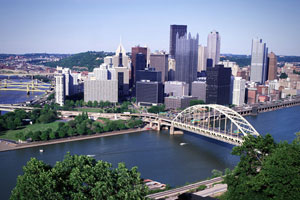 |
Pittsburgh, like Buffalo, has also made a major transformation from an industrial town - in Pittsburgh's case, steel -- into the 21st Century as a hub for education, health care and the arts.
Yet, it's still surprisingly affordable: The cost of living is 12.2 percent below the national average and the average home price is $116,400, well below the national average of $171,700.
It's repeatedly ranked as one of the most livable cities: The crime rate is low, it ranks high on both arts and colleges, and it's at low risk for a natural disaster such as an earthquake, hurricane or tornado.
It's also repeatedly ranked as one of the best sports cities, with the six-time Super Bowl champion Pittsburgh Steelers, the Pittsburgh Pirates baseball team and the Pittsburgh Penguins hockey team. You would be hard-pressed to find a city with more loyal sports fans - a fact that should not be underestimated when it comes to quality of life.
The unemployment rate is 7.8 percent, well below the national average of 10.2 percent. Indeed.com has named it the No. 18 job market, with two applicants for every job available.
Companies That Are Hiring Now: HCR ManorCare, BNY Mellon, PNC Bank, Ernst & Young and Westinghouse Electric Company, according to Indeed.com.
2. Buffalo-Niagara Falls, NY
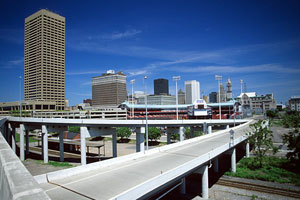 |
Buffalo is an older, industrial city that has "gone through a sort of gut-wrenching transition into the 21st Century," Sperling says. And now that it's gotten over the bumps, it's a great place to live.
The Buffalo-Niagara Falls area has a growing arts scene and it's affordable: The cost of living is 14.4 percent below the national average, and the average home price is $119,700, well below the national average of $171,700.There are more than 20 parks in Buffalo, earning it the nickname, "City of Trees," and for all you sports fans, it's home of the Buffalo Bills football team and Buffalo Sabres hockey team. As for Niagara Falls, the city has moved from an industrial center to a more sustainable tourism-based economy, and with the opening of the Conference Center Niagara Falls a few years ago, it now attracts more business travelers.
The unemployment rate in the region is 8.3 percent, below the national average. Health care and education are the fastest growing industries here.
Companies That Are Hiring Now: Synacor, M&T Bank, Kaleida Health and HSBC Bank, according to Indeed.com.
3. Omaha, NE/Council Bluffs, IA
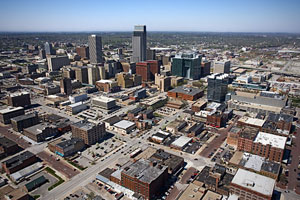 |
Omaha is a great example of a city that's avoided the booms and busts, ranking high on stability.
Could its slow but steady growth be the influence of one of its most famous residents, the richest man in the world, Warren Buffett? The Oracle of Omaha, as he's known, made his money based on the motto "invest in what you know" - not getting sucked into the next big boom.
Quite possibly, Sperling said. Perhaps the bigger impact, though, is that Buffett keeps Omaha in the news, which makes it easier to attract big companies there. Today, there are five Fortune 500 companies headquartered there, including ConAgra Foods, Union Pacific Corporation, Mutual of Omaha, Peter Kiewit and Sons, and Buffett's Berkshire Hathaway.
Plus, it's affordable: the area's cost of living is 12.4 percent below the national average.
The average price of a home is $137,600, well below the national average of $171,700.
The unemployment rate is 4.7 percent, less than half the national average of 10.2 percent.
Companies That Are Hiring Now: ConAgra Foods, Creighton University Medical Center, TD Ameritrade and Soliant Health, according to Indeed.com.
4. Fort Worth-Arlington, Texas
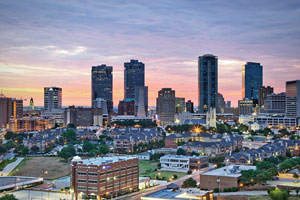 |
"Fort Worth is like the Rodney Dangerfield of the Dallas-Fort Worth area - It gets no respect!" Sperling quipped.
But those who live in Fort Worth know the secret: It's close enough to Dallas that you get all of the amenities of a world-class city, from shopping to cultural events, but it's cheaper. The average home price is about $119,300, well below the national average of $171,700. Plus, the cost of living is nearly 14 percent cheaper than the national average.
It has a growing arts & culture scene, including an orchestra, ballet, opera, botanical garden and one of the best zoos in the country. In fact, the city has started billing itself as the "City of Cowboys and Culture."
Arlington is home to the Dallas Cowboys football team, the Texas Rangers baseball team, as well as American Mensa, the U.S. chapter of the high-IQ society, and the International Bowling Museum.
The unemployment rate in the area is 8.3 percent, below the national average of 10.2 percent.
Companies That Are Hiring Now: Texas Health Resources, JPS Health Network and Bank of America, according to Indeed.com.
5. Austin-Round Rock, TX
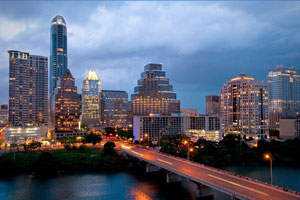 |
Austin-Round Rock ranks high on quality of life and affordability: It has at least a dozen colleges and was voted the No. 1 college town by the Travel Channel. The cost of living is 2.4 percent below the national average.
But what sets it apart is its quirk. The city has been described as a "crazy quilt," stitching together everything from art, improv and country music to environmentalism and high tech. It's home to the South by Southwest festival, featuring independent musicians and filmmakers and emerging technologies. Though, its quirky rep has been around awhile, spawning a new slogan, "Keep Austin Weird."
Round Rock is its conservative counterpart, known for its outstanding education system and as the headquarters of Dell Computers.
The unemployment rate in the area is 6.5 percent, well below the U.S. average of 10.2 percent. It's the No. 10 job market, according to Indeed.com, with two applicants for every job opening.
Companies That Are Hiring Now: Dell, Seton Family of Hospitals, Soliant Health and AT&T, according to Indeed.com.
6. Des Moines-West Des Moines, IA
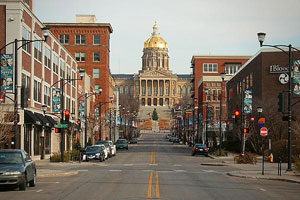 |
Des Moines just got an overhaul in the past few years, including a new science center, Imax theater and an events center.
The city is very livable and has a nice culture, Sperling said. The cost of living is more than 12 percent below the national average, and the median home cost is $150,600, well below the national average of $171,700. West De Moines is a wealthy suburb - you guessed it - west of Des Moines.
Your vote really counts here: The Iowa caucuses have been the first major electoral event since 1972. The New York Times once observed that "if you have any desire to witness presidential candidates in the most close-up and intimate of settings, there is arguably "no place better to go than Des Moines."
The unemployment rate is 7.1 percent, below the national average of 10.2 percent. It has a lot to offer job-wise besides farming: There are over 400 factories there (to process those farmed goods), plus it's a hub for the insurance industry with nearly 60 companies claiming their headquarters here.
Companies That Are Hiring Now: Catholic Health Initiatives, Wells Fargo and Iowa Health System, according to Indeed.com.
7. Madison, WI
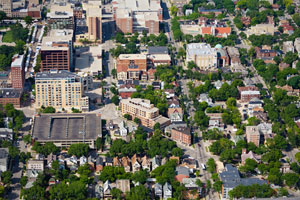 |
Madison winters can be tough but those who love it say all the winter activities available, plus all the city has to offer, offset the cold.
The crime rate is one of the lowest on the list and it's been rated one of the top cities for education, with an estimated 14 students per teacher. Plus, there are at least nine university campuses there.
It has a ton of restaurants, museums, performing arts centers, sports complexes - and a free zoo! Plus, free concerts by the Wisconsin Chamber Orchestra on the Capitol lawn in the summer.
Among its quirkier distinctions are that it's home to the Onion humor newspaper and website and the Great Taste of the Midwest craft beer festival.
The unemployment rate in Madison is 5.2 percent, nearly half of the national average.
Companies That Are Hiring Now: University of Wisconsin Hospital and Clinics, Covance, Promega Corporation and Dean Health, according to Indeed.com.
8. Minneapolis-St. Paul-Bloomington, MN
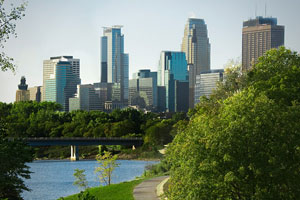 |
"Minneapolis is probably one of the most progressive, greenest cities and the folks are really polite in that Midwestern way," Sperling said.
Minneapolis-St. Paul, also known as the "Twin Cities," and the southern suburb of Bloomington, have a very low crime rate, a lot of colleges and arts and cultural institutions, all of which add to a great quality of life.
Minneapolis is the third largest theater market in the U.S., behind New York and Chicago, Bloomington is home to the famous Mall of America, the largest mall in the U.S. It's home to the Minnesota Vikings football team and Minnesota Twins baseball team, and, it's one of the most literate metropolitan areas in America.
Housing prices and the cost of living are slightly higher than the national average but the unemployment rate is 7 percent, well below the national average of 10.2 percent.
Indeed ranks it as the No. 12 job market, with two applicants for every job available.
Companies That Are Hiring Now: UnitedHealth Group, Medtronic, 3M, Target (office jobs) and Thomson Reuters, according to Indeed.com.
9. Denver-Aurora, CO
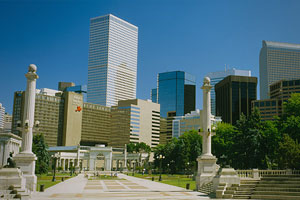 |
Denver-Aurora also scored points for stability and affordability - and because it has a very attractive downtown.
The city has a lot to offer in the way of arts - not just museums but also a lot of public art. Plus, it's one of the few cities that has teams from four major sports - the Denver Broncos football team, Colorado Rockies baseball team, Colorado Avalanche hockey team and Denver Nuggets basketball team.
Plus, the city is surrounded by some of the highest mountain peaks in the nation, making for sweeping vistas and an outstanding array of outdoor activities, such as hiking, biking and skiing. Aurora is an eastern suburb of the city, with a lot of shopping and cultural events, plus it has more than 1,800 acres of park land, at least a dozen golf courses and a 200-acre nature center.
The unemployment rate is 7.4 percent, below the national average of 10.2 percent. Indeed ranks it as the No. 11 job market, with two job seekers for every job available.
Companies That Are Hiring Now: Raytheon, Kaiser Permanente, HCA, HealthONE and Deloitte, according to Indeed.com.
10. Indianapolis-Carmel, IN
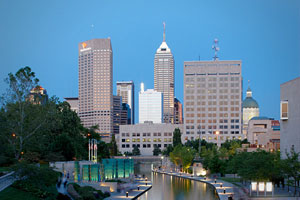 |
The Midwest gets a bad rap as a boring place but after the excitement of the past few years with the financial crisis, I think we can all agree - boring isn't a bad thing.
"During these tough times, we're sort of celebrating these areas that kept their head down and were sort of steady," Sperling explained.
Indianapolis-Carmel ranked high on both stability and affordability. The average home price in Indianapolis-Carmel is $120,200, well below the national median of $171,700 and the cost of living is 17.8 percent below the national average.
The downtown area was recently revitalized and Indianapolis is home to 10 sports teams, including the Indianapolis Colts football team and the Indiana Pacers basketball team. Carmel is one of the affluent cities just north of Indianapolis. Its crown jewel is the 161-acre Central Park, which features a big water park, a boardwalk, four miles of trails and 146,000 square foot fitness center.
The unemployment rate is 8.8 percent, below the national average of 10.2 percent. There are three applicants for every job available, making it one of the top 30 job markets in America, according to Indeed.com.
Companies That Are Hiring Now: Clarian Health, WellPoint Inc, HCR ManorCare, Eli Lilly and Ernst & Young, according to Indeed.com.
© 2025 Created by Dr. Nelson Harrison.
Powered by
![]()
You need to be a member of Pittsburgh Jazz Network to add comments!
Join Pittsburgh Jazz Network